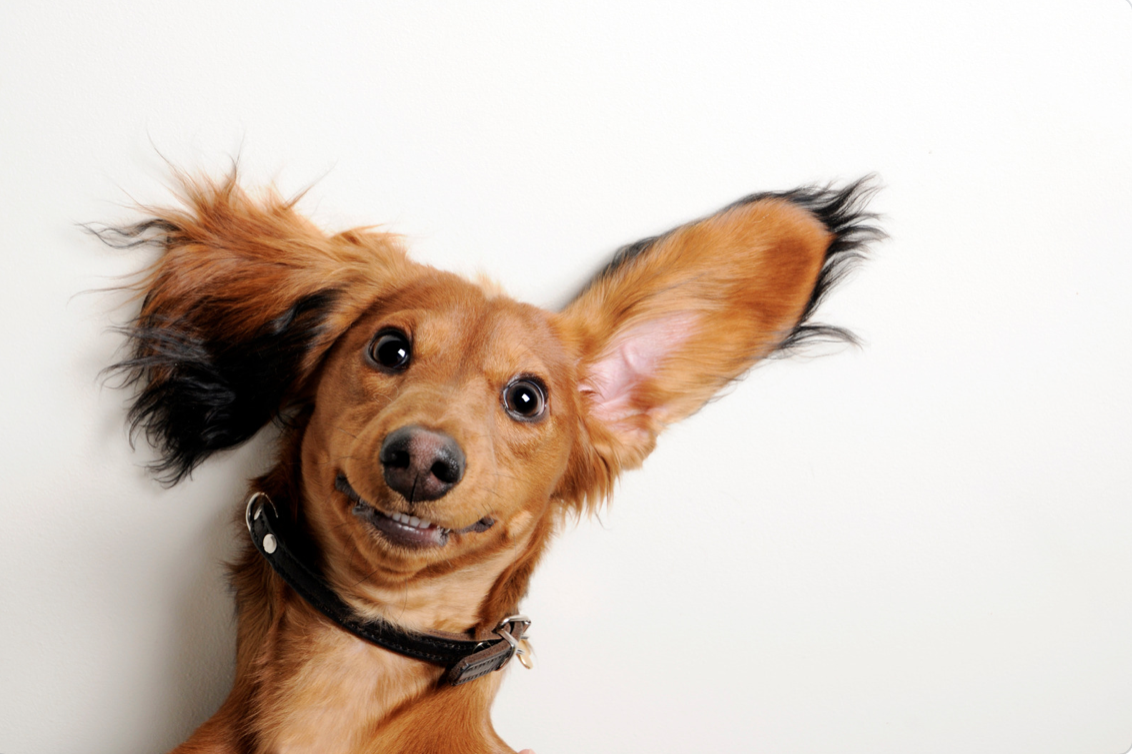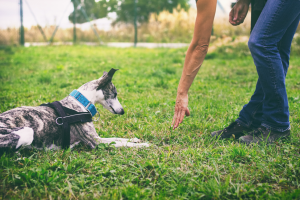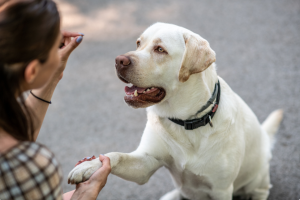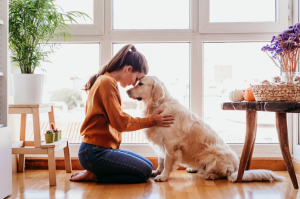
Deafness in Dogs
Dogs may lose their hearing in either one or both ears due to a variety of factors, such as genetics, old age, infections, or loud noise exposure. It’s easy to assume that a deaf dog won’t have as fulfilling of a life as a dog that can hear, but that couldn’t be further from the truth. Even if they can’t hear, deaf dogs still live very happy lives! They just have to rely on their other senses – like sight and smell – to navigate their world.
Now, you might be wondering if it’s tricky to communicate with a deaf dog. While the methods may be different from how we communicate with hearing dogs, it’s quite straightforward once you get the hang of it. So, let’s dive into how you can establish effective communication with your deaf furry friend!
How to Communicate and Train Your Deaf Dog

There are many ways you can communicate with your deaf dog without relying on sound. Adopting these methods will not only help you build a bond with your dog, but help you train them as well! Below are just a few of the many ways to communicate with your deaf dog:
- Hand Signals: Hand signals are an excellent communication method with your deaf dog. You’re likely familiar with some – like raising your hand to signal “stay,” or lowering it to suggest “lie down.” Feel free to create your own signals, but remember to be consistent.
- Vibrations: Dogs can feel vibrations very well, so using something like a vibration collar (not to be confused with a shock collar) to train your deaf dog has been proven to be very effective. These collars can help you do something as simple as getting your dog’s attention, or even help you teach your dog to associate different types of vibrations with different commands! Here is a list of the 10 Best Vibration Collars for Deaf Dogs!
- Touch: Touch is another good way to build your bond and communicate with your deaf dog. A good belly rub or scratch behind the ear is an easy way to show them some love! You can also use touch to train your dog! A gentle tap on the base of their tail can mean “sit”, while a double tap on their shoulder can mean “stay”. Always make sure your touch is kind and comforting!
Be Patient and Consistent

Training your deaf dog requires patience, understanding, and consistency. Use the same signals for each command and reward your pet with positive reinforcements like treats or a loving pat.
You should also make sure to keep training sessions short, fun, and engaging by incorporating a variety of activities. This will keep your dog’s interest and also help create a stronger bond between the two of you. Training isn’t just about teaching commands, it’s also about building trust with your dog!
It’s a Rewarding Experience

Living with and caring for a deaf dog can be a wonderfully rewarding experience. Yes, it may come with its unique set of challenges, but the bond that forms through overcoming these obstacles can be remarkably strong.
Deaf dogs can lead happy and fulfilling lives just as any other dog. Being deaf doesn’t make them any less capable of forming loving bonds with their owners. With a little more effort and understanding, you can cultivate a relationship with your deaf dog that is truly special. Remember, love doesn’t need sound to be felt!
For more information on caring for your deaf dog – or any kind of special needs dog – check out our blog post: “Caring for a Special Needs Dog.”
